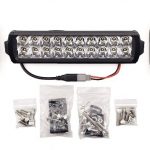If you are fortunate enough to select a property that has no or minimal amount of trees, then you have the opportunity to enhance the landscape and choose trees that are of particular shapes. There are 10 forms or shapes to choose from. Here are some tips on what shapes may look best on your property or best fit a look you are trying to achieve.
Round-shaped tree forms include American Hornbeam, American Yellowwood, Bur, Oak, Black Maple, Flowering, Dogwood, Hackberry, and Redbud. They are ideal for a formal looking landscape. For example, you can plant trees in rows to create a linear appearance. They also work alone on a spacious property.
Spreading tree forms include Beech, Eastern Red Cedar, Fir, Honeylocust, Hornbeam, Korean Dogwood, Larch, Red and White Oak, and Witch Hazel. They feature strong horizontal branches including at the top of the canopy. These trees are very wide and may overwhelm a smaller property as well as dwarf a single-story home. However, the spread contrasts well with a narrow house.
Pyramidal tree forms include American Beech, American Holly, Bald Cypress, Blue Spruce, Cucumber Magnolia, Fir, Linden, pin and Scarlet Oak, and Sweetgum. Commonly deciduous trees and conifers, they have a classic shape and work on properties where they have room to grow.
Oval tree forms include Sugar Maple, Bradford Pear, White Ash, and Sourwood. These trees offer shade and may feature dense foliage that conceals the branches.
Conical tree forms include Arborvitae, Bald Cypress, European Beech, and Ginko. They work great as hedges when planted in rows to define boundaries or serve as windbreakers. The arrangement is also effective as a screen against noise or an undesirable view.
Vase tree forms include Boxelder, Elm, Fringe Tree, Hawthorn, Striped Maple, and Zelkova. These trees appear well near streets and walkways because they don’t block the view of traffic or pedestrians.
Columnar trees include Cherry, European Hornbeam, Lombardy, Poplar, Red Maple, Quaking Aspen, Sugar Maple, and Tulip Tree. These trees aren’t necessarily narrow, but they appear to be due to the pattern of the branching.
Open trees include Ash, Buckeye, Catalpa, Hickory, Pawpaw, London Plane Sycamore, Silver Maple, and Smoke Tree. These trees offer great shade and after their leaves fall, the branches provide a dramatic silhouette.
Weeping trees include Birch, Cherry, Crabapple, Hemlock, Katsura, Larch, Sourwood, and Willow. These ornamental trees soften the landscape and many commonly known trees are available in a weeping form.
Irregular trees include Ash, Buckeye, Catalpa, Hickory, Pawpaw, Sycamore, Silver Maple, and Smoke Tree.







